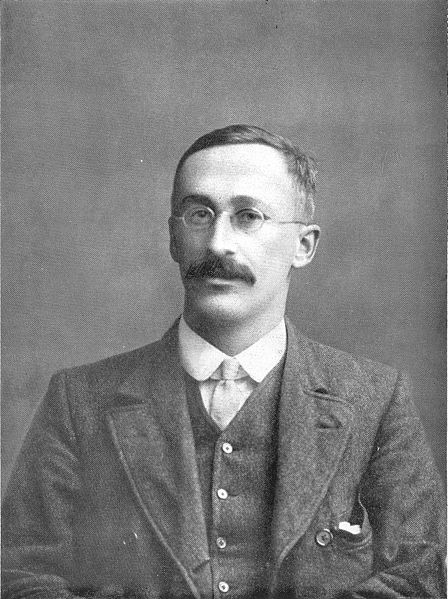William Sealy Gosset (June 13, 1876–October 16, 1937) is famous as a statistician, best known by his pen name Student and for his work on Student's t-distribution.

William Sealy Gosset
Born in Canterbury, England to Agnes Sealy Vidal and Colonel Frederic Gosset, Gosset attended Winchester College before reading chemistry and mathematics at New College, Oxford. On graduating in 1899, he joined the Dublin brewery of Arthur Guinness & Son.
Guinness was a progressive agro-chemical business and Gosset would apply his statistical knowledge both in the brewery and on the farm—to the selection of the best yielding varieties of barley. Gosset acquired that knowledge by study, trial and error and by spending two terms in 1906–7 in the biometric laboratory of Karl Pearson. Gosset and Pearson had a good relationship and Pearson helped Gosset with the mathematics of his papers. Pearson helped with the 1908 papers but he had little appreciation of their importance. The papers addressed the brewer's concern with small samples, while the biometrician typically had hundreds of observations and saw no urgency in developing small-sample methods.
Another researcher at Guinness had previously published a paper containing trade secrets of the Guinness brewery. To prevent further disclosure of confidential information, Guinness prohibited its employees from publishing any papers regardless of the contained information. However, after pleading with the brewery and explaining that his mathematical and philosophical conclusions were of no possible practical use to competing brewers, he was allowed to publish them, but under a pseudonym ("Student"), to avoid difficulties with the rest of the staff.[1] Thus his most famous achievement is now referred to as Student's t-distribution, which might otherwise have been Gosset's t-distribution.
Gosset had almost all of his papers including The probable error of a mean published in Pearson's journal Biometrika using the pseudonym Student. However, it was R. A. Fisher who appreciated the importance of Gosset's small-sample work, after Gosset had written to him to say I am sending you a copy of Student's Tables as you are the only man that's ever likely to use them!. Fisher believed that Gosset had effected a “logical revolution”. Ironically the t-statistic for which Gosset is famous was actually Fisher's creation.[citation needed] Gosset's statistic was \( z=\frac{t}{\sqrt{n-1}} \). Fisher introduced the t-form because it fit in with his theory of degrees of freedom. Fisher was also responsible for the applications of the t-distribution to regression.
Although introduced by others, Studentized residuals are named in Student's honor because, like the problem that led to Student's t-distribution, the idea of adjusting for estimated standard deviations is central to that concept.
Gosset's interest in barley cultivation led him to speculate that design of experiments should aim, not only at improving the average yield, but also at breeding varieties whose yield was insensitive (robust) to variation in soil and climate. This principle only occurs in the later thought of Fisher and then in the work of Genichi Taguchi in the 1950s.
In 1935, he left Dublin to take up the position of Head Brewer, in charge of the scientific side of production, at a new Guinness brewery at Park Royal in North West London. He died in Beaconsfield, England of a heart attack.
Gosset was a friend of both Pearson and Fisher, an achievement, for each had a massive ego and a loathing for the other. Gosset was a modest man who cut short an admirer with the comment that “Fisher would have discovered it all anyway.”
References
^ Hotelling, H.. British Statistics and Statisticians Today. Journal of the American Statistical Association. 1930;25:186–190.
Bibliography
The application of the law of error to the work of the Brewery (1904, nota interna presso Guinness)
"On the error of counting with hæmacytometer". Biometrika 5 (3): 351–360. February 1907.
"The probable error of a mean". Biometrika 6 (1): 1–25. March 1908. doi:10.1093/biomet/6.1.1.
"Probable error of a correlation coefficient". Biometrika 6 (2/3): 302–310. September 1908. doi:10.1093/biomet/6.2-3.302.
"The distribution of the means of samples which are not drawn at random". Biometrika 7 (1/2): 210–214. July–October 1909. doi:10.1093/biomet/7.1-2.210.
"An experimental determination of the probable error of Dr Spearman's correlation coefficients". Biometrika 13 (2/3): 263–282. July 1921. doi:10.1093/biomet/13.2-3.263.
"Review of Statistical Methods for Research Workers (R. A. Fisher)". Eugenics Review 18: 148–150. 1926.
Zabell, S. L (March 2008). "On Student's 1908 Article "The Probable Error of a Mean"(S.L.Zabell)". Journal of the American Statistical Association 103 (481): 1–7. doi:10.1198/016214508000000030.
‘Student’s’ Collected Papers (edited by E.S. Pearson and John Wishart, with a foreword by Launce McMullen), London: Biometrika Office. (1942)
Biographies
E. S. Pearson (1990) ‘Student’, A Statistical Biography of William Sealy Gosset, Edited and Augmented by R. L. Plackett with the Assistance of G. A. Barnard, Oxford: University Press.
E. S. Pearson, "'Student' as Statistician, Biometrika Vol. 30, No. 3/4 (Jan., 1939), pp. 210-250.
External links
Biography by Heinz Kohler
Tales of Statisticians by E. Bruce Brooks
Student's T Distribution
Earliest known uses of some of the words of mathematics: S under the heading of "Student's t-distribution", describes briefly how Student's z became t.
O'Connor, John J.; Robertson, Edmund F., "William Sealy Gosset", MacTutor History of Mathematics archive, University of St Andrews.
Retrieved from "http://en.wikipedia.org/"
All text is available under the terms of the GNU Free Documentation License

